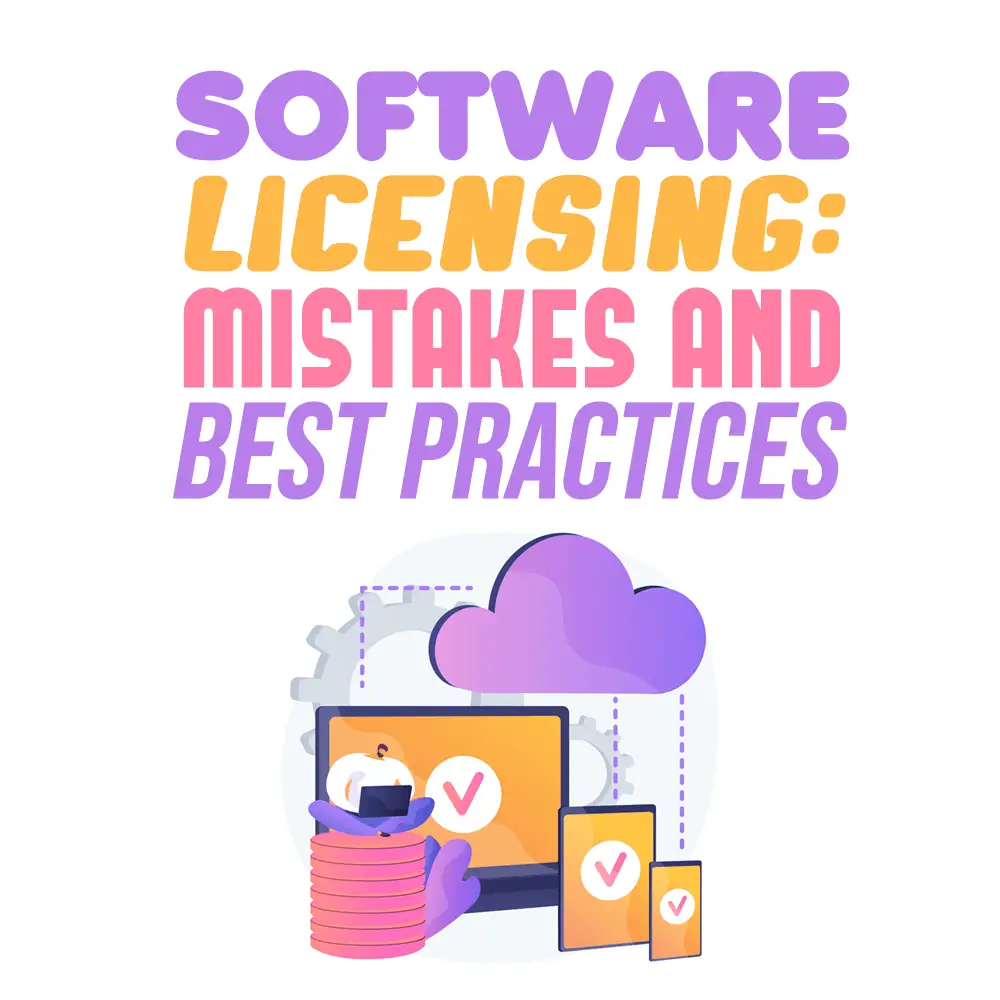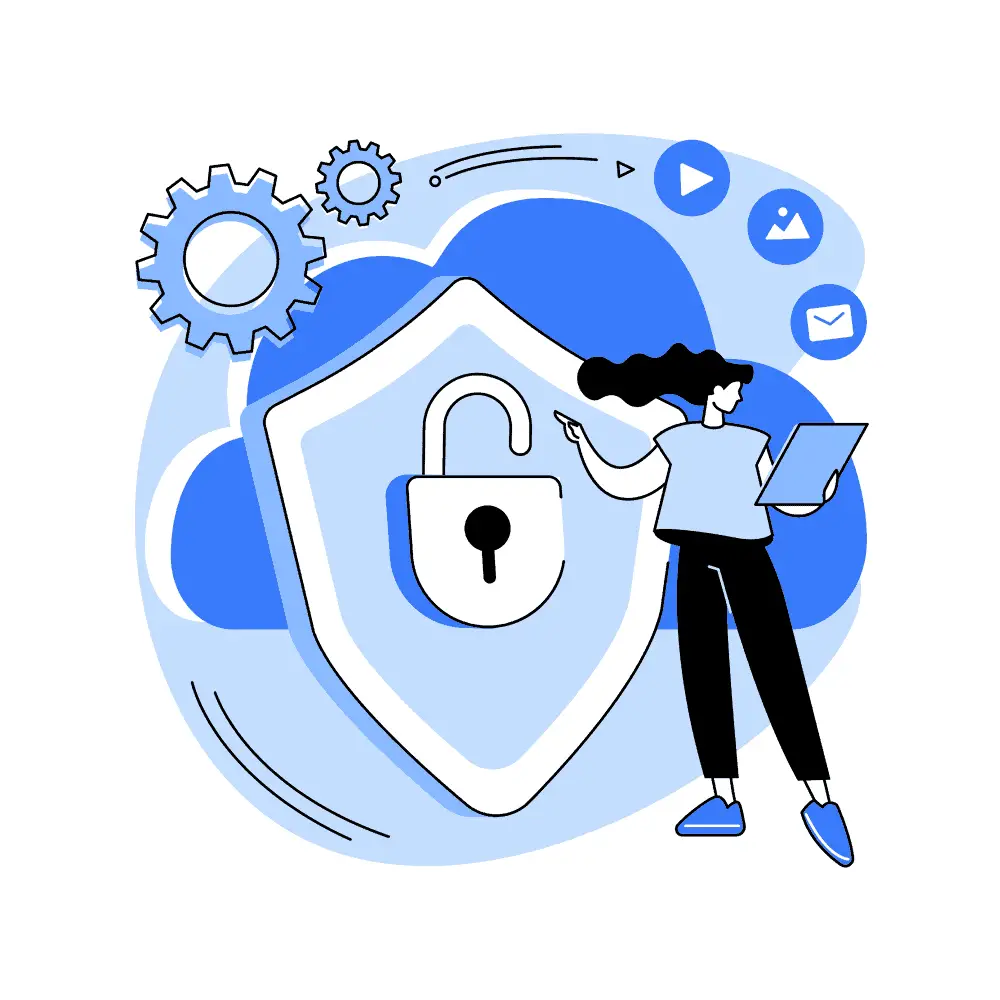
Whether you’re an application engineer, a developer, or have another role in creating software, acknowledging the best practices and knowing where to start in the development phases of software licensing can be crucial to the success of your project.
In this post I will show you the importance of software licensing, the most common licensing mistakes developers make, and how to avoid these errors so you can bring your application to market with confidence.
Why Software Licensing Matters
You’ve spent time, money, and energy to develop a product you believe is both useful and lucrative. How can you guarantee that you’ll see the fruits of your labor? Software licensing and security provides the solution in two ways.
First, it guards your software against malicious use by hackers, illegitimate sales on the gray market, and unauthorized use or overuse, such as pirating. Only you can grant access to the product you created.
Second, it ensures you receive what you deserve as the creator of your application. By implementing product-specific licensing strategies based on factors like time, usage, and features, you can provide options for employing your application that bring both you and the user the greatest benefit.
You may want to consider a monthly or yearly licensing approach, rather than a one-time payment, to draw users in and extend customer lifetime value. Creating variations or new versions of your product is another excellent way to keep customers coming back. We will take a look at these in more detail later in the post.
No matter the approach, the key takeaway is the same: Only you should be able to make money from the product you created.
Licensing Mistakes to Avoid
Realizing the benefits of securing and licensing your software is the first step. But there are still some common blunders you should avoid. To help you, I’ve listed them here together with what you need to do to sidestep them.
Failing to Establish a Clear Goal and a Plan to Reach It
Poor planning leads to poor product maintenance, user frustration, and missed revenue opportunities.
J.R.R. Tolkien said, “It does not do to leave a live dragon out of your calculations, if you live near one.” Everyone in software development lives near a live dragon—count on it. If you don’t outline a clear vision for software licensing and take the steps to make it happen, the dragons of software piracy and analysis paralysis will step in and devour your work.
To summarize what this quote means to developers, the dragons or faults in your software may come from two places: the developers (analysis paralysis) and software piracy.
The dragons that come from developers come in the form of poor product planning and unguided management. These faults result in releasing a product with a poor, ineffective licensing system. The dragons in this case cause a substantial loss in your ROI as well as damage your customer loyalty as users become frustrated with your application.
Software piracy is a direct effect of the rushed decisions you make to meet deadlines when encountering analysis paralysis.
When releasing your application with ineffective licensing and security, these dragons come in the form of end-users who take advantage of your vulnerable application.Through illicit use and distribution, you will be lucky to see any return on your investment and, in many scenarios, lose potential customers to options that are easier to understand and adopt.
Even with taking proper steps to license and secure your application, software piracy is a constant threat to be avoided.
Failing to Gather the Resources for Implementation

The correct formula to developing effective licensing and security comes in three pieces: time, labor, and capital. Finding the correct allocation of each is essential as too much of one and too little of another results in diminished ROI, vulnerable software, and a lack of demand if you are late to market.
Once your application is out there, it’s out there; software you’ve released without adequate licensing or security can’t be pulled back if you come to your senses later, so your efforts can’t be half-hearted.
You’ll need to ensure you have enough of these three vital resources:
- Time – Don’t underestimate the time it will take to fully develop the product, establish licensing, or roll out updates.
- Labor – Don’t overestimate the amount of work each of your team members can accomplish in the time you’ve allotted. This leads to a triage situation, and critical tasks left undone can compromise the user experience. Especially in times like these, with Covid-19 sweeping across the globe, it is important to learn how to best increase and maintain productivity remotely.
- Capital – Don’t under- or overestimate the investment you’ll need to make to accomplish your licensing goals. Underspending could cost you growth opportunities. On the other hand, more complex licensing schemes typically require a greater investment. The idea is to strike a balance that maximizes ROI.
Failing to Tailor Your Licensing Model to Your Users’ Needs
Your choice of a licensing model should be based on a thorough and sound understanding of your customers’ requirements and values. By recognizing which of your product’s features provide the most value to your customers, you can develop a model that will inspire loyalty and keep you profitable for a long time to come.
Remember to not only assess customers’ current usage, but also look ahead by monitoring market trends and the direction of your industry. An exceptional user experience, one that continues long after the prospect has become a customer, is the goal.
Below, we will go deeper into what you should look for when laying the blueprint of your licensing strategy.
The Way Forward
With these pitfalls in view, what can you do? Steer clear of miscalculations with a well-defined plan.
Step 1: Decide Whether to License or Sell
Licensing your application is a no-brainer for the reasons I listed above. Selling your application once creates one revenue collection point, whereas licensing your software creates not only multiple revenue collection points but also additional revenue streams.
To break it down, imagine that you are going into the apple selling business. You plant seeds to grow your first tree and are diligent in watering and nurturing this tree day and night. Well, when the apple tree begins to bloom and produce apples, are you going to sell the whole tree? Or are you going to sell each individual apple?
Now, I can't imagine too many people can or even want to purchase a whole apple tree, but I would imagine that there are hundreds of others that would purchase an apple. Similar to selling apples, licensing your application by breaking down your product into features, usages, or time and lowering the cost to your clients will increase your market share as well as your monetization capabilities.
Step 2: Choose a Licensing Method
Will you license your product based on time, such as monthly or yearly access? Perhaps you’ll base it on features, letting users choose between basic and advanced versions. Or, you could license it for a limited number of users, with an upcharge to add more.
For simplicity, let's assume we are developing a fitness application as we answer these questions, but do keep in mind that these answers will vary heavily to your unique application.
- Which method will bring in the most revenue?
- Feature-based: Using feature-based licensing will allow you to cater to those who may want the most user-friendly version (for example, it enables calorie tracking) as well as to those who want calorie tracking as well as workout plans.
- Which method will offer the user the greatest value?
- Feature-based: By allowing the users multiple different versions that fit their needs, you are enabling your customers to greatest bang for their buck, which in return is not only creating you revenue but also customer loyalty.
- Which method will ensure customers get the support they need?
- Feature-based: By breaking the application down into different features, you will be able to best determine where you can not only improve user experience but also be able to fix and correct your application more quickly.
- Which method will let you supply updates as needed to keep your application on the top of the market?
- Feature-based: Similar to the reasons listed in the previous entry, feature-based licensing allows you to determine where changes and additions to your application can be made that will increase user satisfaction and lead to other potential revenue opportunities as you learn about your customers’ needs.
As you can see, in the example of developing a fitness application, a feature-based software licensing and security solution will be the best solution as it provides you with the ability to supply ongoing updates and support, all the while creating the greatest ROI as well as the best bang for your buck to each of your consumers.
Step 3: Settle on a Budget and Timeline

To come up with a budget, you’ll need to know:
- What tools and resources you will need.
- How many people it will take and what they should be paid.
- Whether you’ll need help from consultants or other outside resources.
To devise a timeline, you’ll need to determine:
- What specific tasks must be done to carry out the plan.
- When you can schedule meetings to brainstorm ideas, check progress, and make adjustments.
- How team members will know when tasks are completed.
Step 4: Select a Licensing System That Fits Your Goals, Budget, and Timeline
The main types of licensing systems are cloud-based, software-based, and hardware-based. Each one has its pros and cons.
Cloud-based licensing offers superior scalability and reduced up-front costs, makes updates easy, and helps companies collect user information to improve their products. On the downside, it’s typically dependent on a stable internet connection and susceptible to cybersecurity concerns. Moreover, upgrades are outside your control.
Software-based licensing can be inexpensive and works well if you’re licensing tons of users and can afford to make only a small amount of revenue on each one. However, it doesn’t mount the best defense against pirates and relies on a hardware identifier, so if hardware changes, the license has to be updated.
Hardware-based licensing is housed on a USB dongle, and pricing per dongle is low. The license is not tied to either your computer hardware or internet connectivity, leading to greater security and quick implementation or removal. This option offers high flexibility and customization for various use cases and environments.
Ensuring that you correctly suit your application to your software is just as essential as licensing your application, you want to be sure that the delivery and timeliness of your software matches your licensing system.
The licensing system that works best for you depends on the nature of your product; for example, if you are distributing a physical product with your application, you may want to consider hardware-based licensing and decide whether the dongle should be internal or external.in the case that you're distributing a cloud-based application, you would likely want to pair that with a cloud-based licensing solution so that your end-users do not need to wait for a hardware device to come in the mail.
You Can’t Ignore Software Licensing
As a developer, you can’t ignore the need to license your software if you want to control its use and profit from your labor.
Getting your licensing model right is an integral part of the licensing process, so be mindful to avoid common errors that arise from poor planning. Instead, take the four concrete steps I’ve listed above to secure your investment for years to come.
Software licensing and security ensures that you can deliver easily integrated, reliable software solutions and products customized to meet your end-users needs. Licensing your application enables personalized customer support to solve end-user headaches, and putting a singular focus on software licensing and security will secure your intellectual property as well as your revenue.
